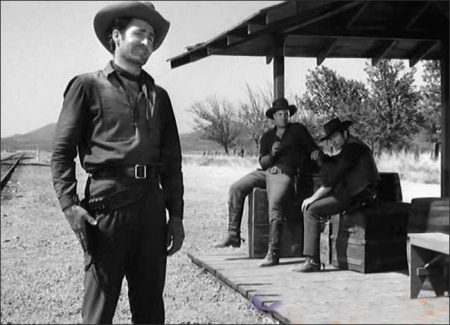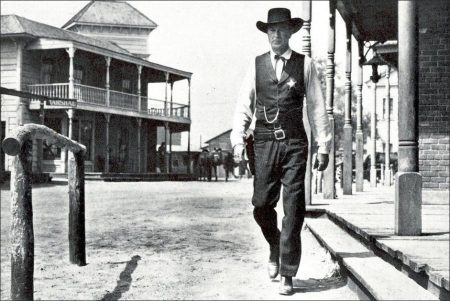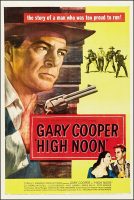High Noon movie storyline. Will Kane is a town Marshal. It’s his wedding day, and his last day as a lawman. He was about to leave town with his new bride to start a new life when some men come to town who tell him that a man he sent to prison several years ago has just been released and is arriving on the noon train.
Kane, and many of the townsfolk who remember him, know that he’s coming to town for one thing; to get Will. Will’s friends tell him to leave town, which he does, but Will feeling that running away is not a solution returns and intends to face him. Will tries to find support from his friends, but all of them don’t want to help him, or are too afraid and all that they tell him is to leave, even his wife feels the same way, and as the train comes closer, Will is all alone.
High Noon (1952) is probably the best movie of all time ever made in the West – one production well at the box office by Stanley Kramer and director Fred Zinnemann (who also directed From Here to Eternity (1953) and A Man For All Seasons (1966)). The type of the West was busy telling a story unusual social problem on civic responsibility, without much violence typical border, sweeping landscapes, or tribes of marauding Indians.
screenplay by Carl Foreman [this was his last film before Hollywood blacklist exile in London soon after his work on Home of the Brave (1949), Champion (1949) and men (1950)] written in a policy-oppressive atmosphere in the early 1950s when McCarthyism and political persecution multiply, was loosely adapted from a news magazine Collier’s The Tin Star (by John W. Cunningham) published in December 1947.
In fact, the film’s story has often been interpreted as a moral or parable or a metaphor for the artists threatened the Hollywood blacklist (which was a screenwriter Foreman) who faced persecution policy HUAC during the McCarthy era due to real or imagined connections to the Communist Party, and makes vital decisions to stand their ground and defend moral principles according to their conscience.
It has also been interpreted as an allegory of the Cold War and American foreign policy during the Korean War. This taut, well-scripted, minimalist film tells the story of a loner, stoic marshal honor-bound / hero, past his prime minister and already retired, which was left deserted and abandoned Hadleyville by people he had faithfully protected for many years (symbolically – in the years of the Second World War).
Because of the cowardice of the inhabitants of the city (representing cooperative witnesses before HUAC), physical disability, interest, opportunism, and indecision, he was refused help at every turn against a killer quest for revenge and his band. Fearful but duty, he finally defeated the enemy, thereby sparing the civilized (democratic) of the city’s encroachment barbaristic frontier justice brought by the deadly four-man group of outlaws (the symbol of aggressive threat the Korean War, or HUAC itself). Embittered by the end of the film, he throws his tin star in the dirt of the border town of dishonor.
High Noon (1952)
Directed by: Fred Zinnemann
Starring: Gary Cooper, Grace Kelly, Thomas Mitchell, Lloyd Bridges, Katy Jurado, Otto Kruger, Lon Chaney Jr., Harry Morgan, Eve McVeagh, Ian MacDonald, Morgan Farley, Harry Shannon, Lee Van Cleef
Screenplay by: Carl Foreman
Production Design by: Rudolph Sternad
Cinematography by: Floyd Crosby
Film Editing by: Elmo Williams
Set Decoration by: Murray Waite
Art Direction by: Ben Hayne
Music by: Dimitri Tiomkin
MPAA Rating: PG for some western violence, and smoking.
Distributed by: United Artists
Release Date: July 24, 1952
Views: 310


